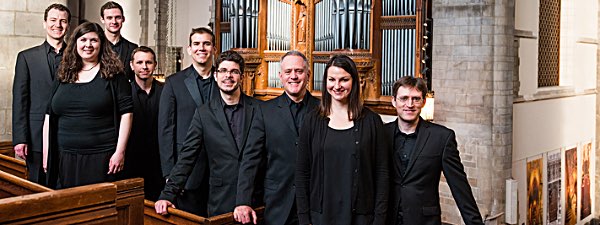- By Laurel Gilmer
- Entertainment
 Print
Print 
Special guest Schola Antiqua of Chicago will perform at Sage Chapel Tonight, October 27 at 8:00pm. The professional early music ensemble presents 'Music in Secret', a concert of medieval and early modern music by and for women in the convent that has rarely been heard in contemporary performance. Schola Antiqua has provided the highest standards of performance and education at institutions throughout the country, including the Metropolitan Museum of Art Cloisters, the Morgan Library and Museum, and the Art Institute of Chicago.
The 'Music in Secret'8 program showcases a thirteenth-century Italian plainchant recently unveiled at the Art Institute with the singers reading music from projected images of the original manuscript; the program also includes works by Hildegard von Bingen and Sulpitia Cesis, a nun from the Italian city of Modena. The program is complemented by keyboard works also heard in convents, played by British organist and guest director Naomi Gregory, a leading Renaissance music historian.
In the convent, nuns spent a significant amount of time singing the daily liturgy, and there were many opportunities for musical education for them, from singing to composing to playing the organ. Rather than remaining cloistered inside the convent, the music emerged to the outside world through a variety of modes. In the late 1500s, convents in northern Italy offered the public the chance to "overhear" the highly skilled nuns' musical performances, typically from a side chapel attached to the convent church. From the mid-sixteenth century, the music of the convent began to appear more regularly in print.
This program includes four chants from an even earlier example of music in print from the thirteenth century. Artistic Director Michael Alan Anderson serves on the musicology faculty of the Eastman School of Music in Rochester and specializes in late Middle Ages and Renaissance music and devotion. Describing the program, Anderson says that "learning to sing from the medieval musical notation has some challenges but is very rewarding to experience the visual beauty of this unique source."
To make the publication more marketable, the convent chants were published in the standard voicing of soprano, alto, tenor, and bass, yet those parts needed to be adapted to women's voices in the convent performances. Some solutions included using instruments like bass viol and organ to cover the missing parts or singing an octave higher, and the Schola Antiqua performance will utilize those solutions as well.
v13i42



